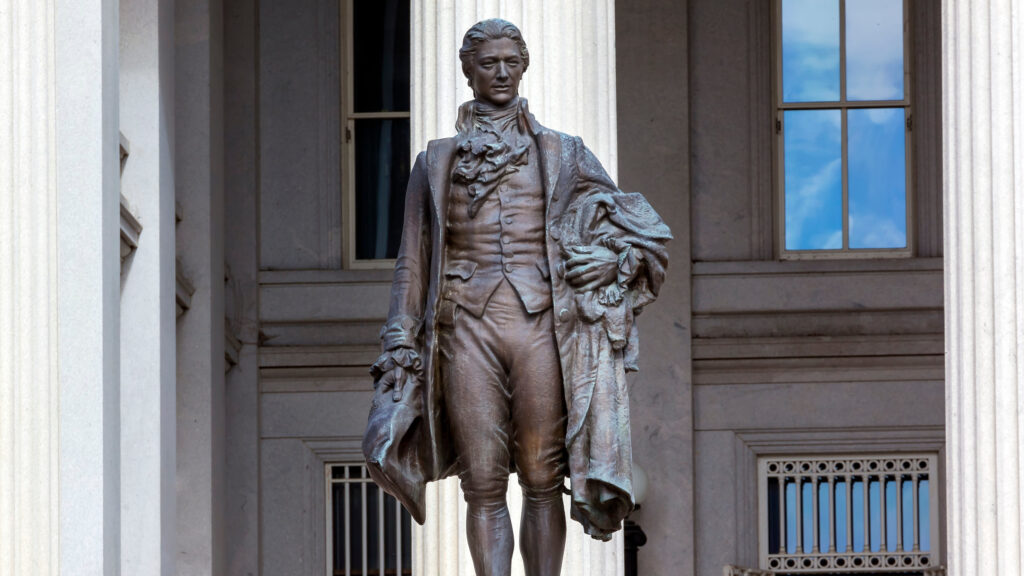The China challenge has caused America to search for the tools it once deployed so well. It’s time to learn from the past — and regain America’s mighty industrial self-sufficiency.
Plenty of lobbyists and policymakers in Washington extol the virtues of the free market, but they often do so without regard to the national interest. And now, as Washington finally responds to Beijing’s aggressive competition, some warn that the United States “can’t be like China.”
They say that using federal economic and trade strategies amounts to “state-directed capitalism,” and consumers will pay the price.
It’s a criticism leveled by some members of both parties. Democrats criticized former President Donald Trump’s tariffs; Republicans opposed the subsidies in the Biden administration’s Inflation Reduction Act.
This arguing overlooks something fundamental. The early U.S. economy was built on an economic strategy guided by the federal government. And it was very much intended to establish a broad industrial base.
The “American System” devised by Henry Clay in 1812 followed Alexander Hamilton’s 1791 economic plan. Both favored tariffs, subsidies, and infrastructure development.
When the first Congress convened in 1789, it immediately adopted a tariff act. This was done partly to generate federal revenue, but also to aid “the encouragement and protection of manufactures.”
At the time, it was feared that Britain’s lead in manufacturing would leave the United States a mere agricultural nation. It’s why, in his first address to Congress, George Washington promoted “manufactories” to render the nation “independent of others for essential, particularly military, supplies.”
That’s a far cry from America’s current focus on cheap consumption. Now, the United States depends on a leading adversary — China — to supply its critical medicines, key military hardware, and other essential commodities. The COVID pandemic demonstrated the foolhardiness of such a heavy reliance on imports.
What Hamilton and Clay urged was strategic — not unconditional — integration with the global economy. Their focus on production is what propelled America’s stunning growth in its first 150 years.
Now, as Washington confronts China, multinational companies fear that their profitable offshoring could be swept aside. In response, they opportunistically warn that federal subsidies for critical industries will lead to economic inefficiency. They claim that import tariffs will lead to increased consumer costs.
How ironic, since Beijing has used the American System over the past 30 years to generate prosperity — particularly through a much larger version of subsidies, infrastructure building and industrial policy.
China’s breathtaking progress has enabled the growth of its authoritarian governance, military buildup and Uyghur genocide. Beijing recently landed a spacecraft on the far side of the moon, and has launched the highly advanced Fujian aircraft carrier.
China also leads the world in rare earth metal production, dominates global steel output, and is expected to become the world’s largest pharmaceutical producer in the next decade. Since 1978, China’s economy has averaged 9% annual growth.
What is China doing that America has forgotten?
Hamilton urged a dozen or so key measures, including “protecting duties” (tariffs), “prohibition of the exportation of the materials of manufactures” (export bans), “pecuniary bounties” (export subsidies), “premiums” (subsidies for key innovations) and “exemption of the materials of manufactures from duty” (tariff exemptions for needed raw materials).
This is the recipe that the United States pursued into the 20th century. It worked. And now, Beijing is riding it to the top.
Some bristle at the Biden administration’s recent manufacturing policies — what national security adviser Jake Sullivan summarized as an “investment strategy to pull forward innovation, drive down costs, and create good jobs.” But many criticized the Trump administration for similarly proposing that “economic security is national security.”
It’s all part of the American System — what Mr. Sullivan sees as “foundational to economic growth, strategic from a national-security perspective, and where private industry on its own isn’t poised to make the investments needed to secure our national ambitions.”
Mike Tyson once said, “Everyone has a plan until they get punched in the mouth.” Pundits and lobbyists can criticize tariffs and subsidies all they want.
But when China invades Taiwan, their complaints will look silly in the face of a hardened, heartless adversary.
Thomas Jefferson initially opposed Hamilton on the issue of tariffs and industrial subsidies. But after the War of 1812, he said: “To be independent, for the comforts of life, we must fabricate them ourselves. Manufacturers are now as necessary to our independence as to our comfort.”
That’s what real-world experience teaches.
America has forgotten its historical roots. But every country that has achieved economic success — including Germany, Japan and South Korea — has used some version of the American System.
The China challenge has caused America to search for the tools it once deployed so well. It’s time to learn from the past — and regain America’s mighty industrial self-sufficiency.
Doing so will strengthen national prosperity, not make the United States more like China.
This Op-Ed by CPA CEO Michael Stumo was originally published on July 10, 2023 in the Washington Times.













